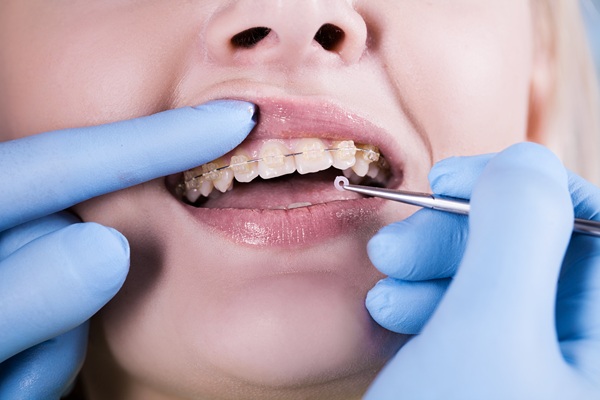 At certain points in life, orthodontic therapy may be more helpful and necessary. Take the adolescent years, for example. At this time of life, people are particularly mindful of their appearance and may feel self-conscious. Teens who have crooked teeth can get relief and get a new, straight smile. A visit to the orthodontist can include a discussion of which therapies make the most sense. There are some effective options available that produce long-term results.
At certain points in life, orthodontic therapy may be more helpful and necessary. Take the adolescent years, for example. At this time of life, people are particularly mindful of their appearance and may feel self-conscious. Teens who have crooked teeth can get relief and get a new, straight smile. A visit to the orthodontist can include a discussion of which therapies make the most sense. There are some effective options available that produce long-term results.
Orthodontic issues that commonly affect teens
A smile without any problems can be difficult to come by. Many people have alignment issues or other struggles that require treatment. An orthodontist may treat a teenager who has crooked teeth. This concern can range from mild to moderate to severe. Another frequent need that teens have is a bite dysfunction. This may include a crossbite, underbite, or overbite.
Orthodontists also treat open bites, crowded teeth, and gaps in the mouth. Some people may also have twisted or oddly shaped teeth. Other patients may come into the office with worn teeth. The right therapy can address all of these.
Traditional braces
In some form, braces have been around for centuries. This tried-and-true orthodontic treatment can be effective for the most problematic alignment concerns and bite abnormalities. Braces consist of metal brackets and wires, as well as elastics. The orthodontist will take X-rays and make impressions of the mouth to customize a treatment plan. From this plan, the orthodontist can arrange the component in a way that puts pressure on the teeth. This causes them to move into the right spots.
Clear braces
The goal of this orthodontic therapy is the same as with traditional metal braces. A big difference is the material the braces are made of. Here, the braces are made of tooth-colored ceramic or porcelain. This allows the braces to be virtually invisible and not stand out as regular metal braces do. Patients who are worried about having clunky hardware in their mouth may choose this method.
Treatment lengths with braces can vary. Most teens will wear them for two to three years. Regular visits to the orthodontist’s office are vital. At these appointments, the orthodontist will adjust the elastics and check on the treatment’s progress.
Clear aligners
More and more, this is becoming the orthodontic treatment that teens are choosing. It is not likely that people will know when the teen is wearing aligners. The appliance is a mouthguard-like plastic tray that fits over the teeth. The device moves the teeth through constant but gentle pressure. The treatment length is usually shorter than braces, often lasting around a year or less.
The aligners are also removable and comfortable to wear. Be aware that the aligners are not effective for teens who still have baby teeth. But teenagers also like this treatment because the patient does not have to wear the aligners all the time. The orthodontist will advise the patient to wear the device 21 to 22 hours a day.
Different methods are available to renew your teen’s smile
If your teen is struggling with crooked teeth or other smile-related problems, hope is available. Teenagers no longer have to hide their smile in shame. Braces, clear braces, or aligners can straighten teeth and correct bad bites. Make an appointment with the orthodontist today to get started.
Request an appointment or call Michael Emanuel DDS PLLC at 718-635-4822 for an appointment in our Brooklyn office.
Related Posts
Curious about orthodontic treatment? Read on to learn more. Straight teeth and properly aligned jaws make for a healthy and functional smile. Many people are lucky to have naturally straight teeth, but others require orthodontic intervention to correct overcrowding, gaps, or misalignment. In some cases, orthodontic therapy can extend far beyond repositioning the teeth in…
Discovering you need orthodontic care does not have to be a worrisome situation. The orthodontist will help you the whole way, and the staff will guide you on any concerns, ranging from financing to maintenance. If you have booked an appointment with an orthodontist, this piece provides a guide on what to expect and questions…
Maintaining the position of the teeth after orthodontic treatment requires the use of dental retainers. Read on to learn about the different types of retainers available. As soon as the braces or aligners come off, your teeth will begin repositioning themselves to where they were before treatment. To avoid relapse, you should use retainers. They…


